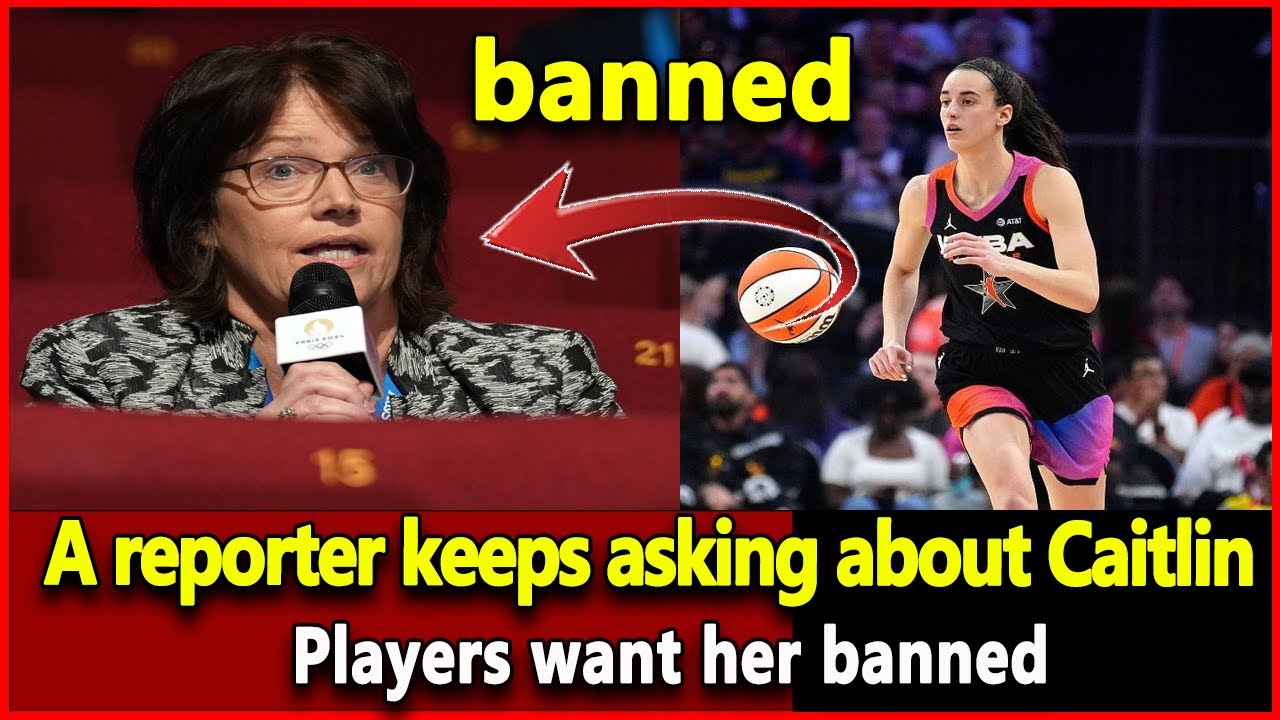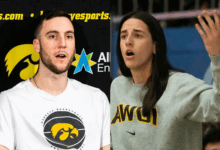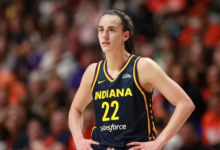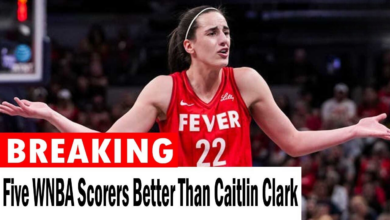TOP NEWS: A reporter keeps asking about Caitlin Clark. Players want her banned

In the latest controversy shaking the WNBA, tensions have risen around a reporter’s persistent focus on Caitlin Clark, leading players to demand that the journalist be banned from covering the league. The situation unfolded when D’Jai Carrington of the Connecticut Sun found herself at the center of intense questioning during a playoff series against Clark’s Indiana Fever. The incident, which involved Carrington accidentally hitting Clark in the face during a game, sparked a media storm when USA Today columnist Christine Brennan pressed Carrington on whether the action was intentional.
Brennan, a veteran sports journalist, asked Carrington if she had deliberately swatted Clark, leaving her with a black eye. Carrington firmly denied it, but Brennan followed up with a pointed question, asking if she had laughed about the incident later during the game. This line of questioning, at an already tense moment for the league, struck a nerve with both Carrington and other WNBA players. The exchange took place against the backdrop of a league that has long been driven by women of color but has seen much of its recent attention dominated by the rise of Clark, a rising star who is white.
The WNBA has been grappling with how to handle its newfound media spotlight, much of which has focused on Clark’s achievements and the league’s growing success. However, this attention has not come without challenges. Following the incident, Carrington and other players reported an increase in online harassment, including racially charged abuse. Security was even tightened at the Connecticut Sun’s home arena in response to the threats. Amid these mounting tensions, Brennan’s questions sparked a wider conversation about media representation, racial dynamics, and the ethics of journalism.
Three days after the interview, the Women’s National Basketball Players Association (WNBPA) issued a formal statement condemning Brennan’s approach and calling for her press credentials to be revoked. The statement accused Brennan of attempting to bait Carrington into a controversial narrative and criticized her for perpetuating harmful stereotypes, including those that could incite racist, homophobic, and misogynistic attacks on social media. The WNBPA’s statement was pointed: “You have abused your privileges and do not deserve the credentials issued to you.” This strong stance highlighted growing frustration within the league about how certain athletes are treated by the media, particularly women of color.
Brennan, a prominent figure in sports journalism, defended her actions, insisting that her questions were standard practice. She noted that asking tough questions has been a hallmark of her career, and other journalists, including her editors at USA Today, supported her, stating that the interview was in line with professional ethics. Brennan also argued that focusing on major stories, such as Clark’s rise, is common in sports journalism, much like how she once covered Tiger Woods extensively. She emphasized that she wasn’t pushing a particular narrative but merely doing her job by asking direct questions.
The controversy, however, goes beyond Brennan’s specific line of questioning. Many within the league have expressed discomfort with the outsized focus on Clark, with some reporters accusing Brennan of neglecting the broader WNBA narrative to center her coverage almost exclusively around Clark. Several athletes have voiced concerns that the media’s narrow lens on Clark sidelines other players, many of whom have worked hard to elevate the league.
Gregory Lee Jr., a former editor at The Athletic, remarked that Brennan’s coverage of Clark has become so dominant that it seems like she is acting as Clark’s personal public relations agent, rather than providing balanced reporting. Tara Foster Brasby, a sideline reporter for the Connecticut Sun, also criticized Brennan for using media availabilities, typically meant to focus on the game and players, to gather material for an upcoming book on Clark. Many felt that Brennan’s approach was unfair to other athletes who deserve equal attention and coverage.
The ongoing tension between the WNBA and the media is not new. Historically, the league has had a complicated relationship with reporters, often struggling to attract consistent coverage. In recent years, however, the league has seen unprecedented growth, driven in part by stars like Clark, who have brought significant attention to women’s basketball. Clark’s games have set attendance records, and her presence has helped boost TV ratings, with her regular-season games attracting over a million viewers, compared to just a few hundred thousand for other matchups.
Despite this growth, many within the league remain frustrated with how Clark’s stardom is framed, often at the expense of other players. The WNBPA’s statement, calling for Brennan’s removal, sparked debate over whether such a drastic response was warranted. Some journalists and league stakeholders believe that pulling a reporter’s credentials should only be considered in cases of clear ethical violations, and they view this as an overreaction. Still, others argue that the players’ concerns about how they are portrayed, particularly in racially charged moments, must be taken seriously.
Adding to the complexity of the situation is the growing racial divide in the coverage of the WNBA. Carrington, who is Black, has faced extreme online harassment, including death threats and racist messages. One particularly disturbing incident involved a social media post with Carrington’s face superimposed over George Floyd’s, with Clark’s face replacing the police officer responsible for his death. These incidents have only heightened the stakes, turning the media’s focus on Clark into a flashpoint for discussions about race, equity, and the ethics of sports journalism.
As the league continues to navigate its evolving media landscape, the balance between promoting star athletes like Clark and ensuring fair coverage for all players remains a delicate issue. With the WNBA poised for continued growth, how it handles these challenges will be crucial in shaping its future narrative, both on and off the court.




